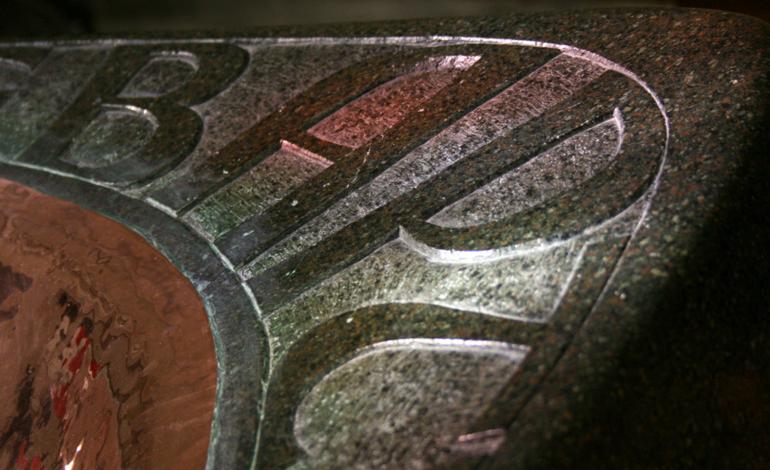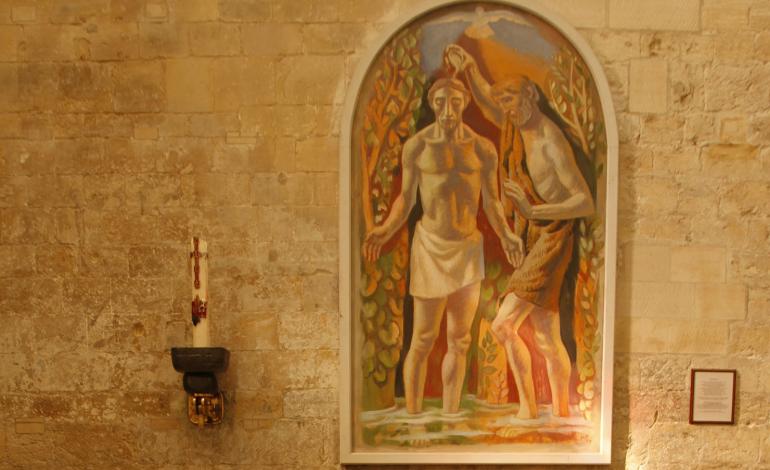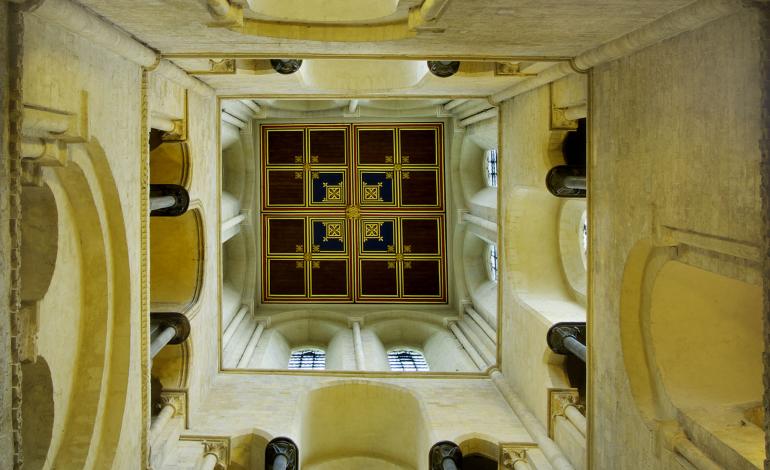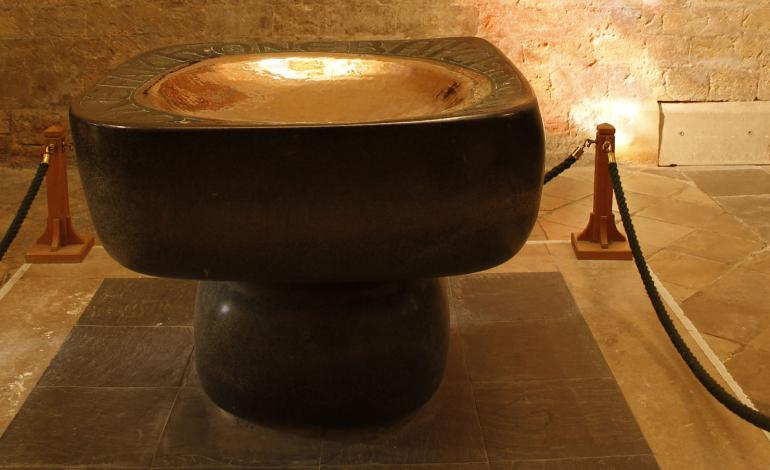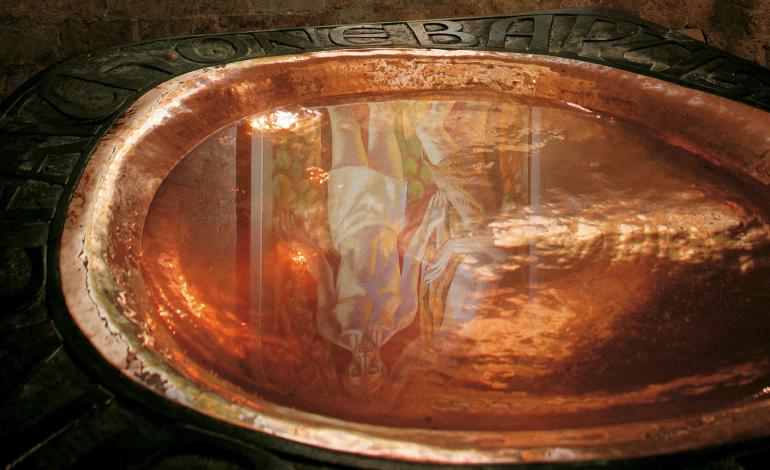The Baptistry sits under the south-west tower of the Cathedral and is home to the wonderful copper font which is used for baptism. Commissioned by the Dean and Chapter the font is the work of John Skelton.
Made of Cornish polyphant stone from Bodmin Moor, the beaten copper insert in the bowl was chosen to reflect and harmonise with the adjacent painting on the west wall of 'The Baptism of Christ' by Hans Feibusch. The text around the bowl, “One Lord, One Faith, One Baptism”, is from Ephesians 4:5.
The Skelton font replaced a Victorian one considered to be of poor design. An earlier 15th century font, used in the Georgian Period by the congregation of the sub-deanery church of St. Peter the Great who worshipped in the North Transept and Treasury, was moved to the new church of St. Peter, opposite the Cathedral, in 1850 and subsequently, on the amalgamation of the parishes, to St. Paul's at Northgate. Its site is indicated by an inscribed slab in the North Transept.
The light fixture, or sconce, on the west wall of the Baptistry is a small-scale model of the font, which was produced by John Skelton for the approval of the Dean and Chapter before commencing the full sized work. This sconce holds a Paschal candle - a large, white candle used throughout Easter and then through the year on special occasions, such as baptisms and funerals. South of the sconce is a Consecration Cross.
Baptism of Christ
The Baptistry is also home to Hans Feibusch’s painting ‘The Baptism of Christ’. Originally painted in 1951, Feibusch returned to repaint the artwork in 1977 when its position in the Baptistry was moved due to a level-access doorway being opened up. The different light conditions in the painting's new site drew Feibusch back to enhance the artworks subtleties.
Feibusch (1898-1998) was a German painter and sculptor of Jewish heritage. After the Nazi party came to power, his life in Germany became impossible and he emigrated to Britain in 1933. Whilst living in Britain he received the first of his church commissions for murals on religious themes. He died in 1998 just before his 100th birthday and his estate bequeathed the entire contents of his studio at the time of his death to The Pallant House Gallery in Chichester.
John Flaxman
The Baptistry also houses two memorials by the modeller and sculptor John Flaxman (1755-1826). On the south there is a memorial to Chichester poet William Collins (1721-59) and on the east wall a memorial to Jane Smith (1797), showing the spirit of marriage reclining on an extinguished torch.
On the south wall there is a further memorial to Ernest Augustus Udney (died 1808 aged 7 years) by Henry Westmacott (1784-1861), which was erected by his “afflicted grandmother” Sarah.
Stained Glass
There are two stained glass windows in the Baptistry, both dating from the Victorian era. The top one is by William Miller, his only work in the Cathedral, and is dedicated in memory of Charles Edward Hutchinson, Canon Residentiary of Chichester for 42 years. It depicts Jesus appearing to St. Peter after the Resurrection and commanding him “Feed my lambs”.
Beneath are two scenes in roundels of Christ healing the sick at the Poole of Bethesda (upper scene) and Dorcas (also known as Tabitha) distributing clothing to the poor, and in the background being raised from the dead by St. Peter (lower scene).
This lower window is probably the work of William Henry O'Connor in 1862. It is in memory of Sir John Forbes M.D. (1787-1861) a popular physician and benefactor to the city of Chichester, and his wife, who founded the local Dorcas charity.
The South-West Tower
The architecture of the three lower storeys is Norman, but the two upper storeys are of Early English design.
This is thought to be due to a great storm in 1210 which brought down two towers, one of which was the south-west tower and when repaired, using Caen stone, building design had moved on and the more modern approach was used. The tower was also strongly buttressed on the south and south-west, and an upper stage with pairs of tall lancet windows, was added. The wooden ceiling is modern.
